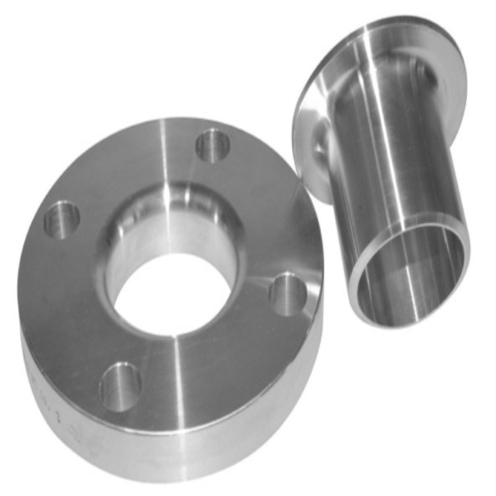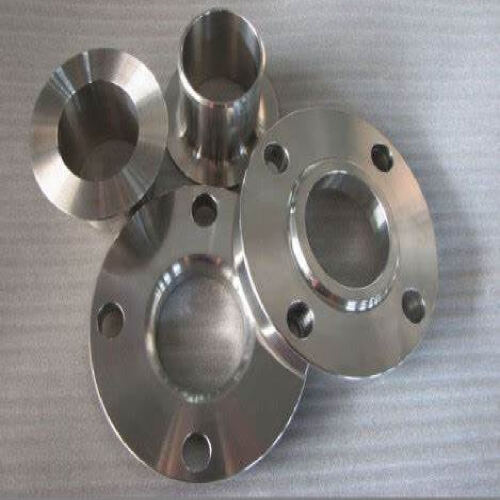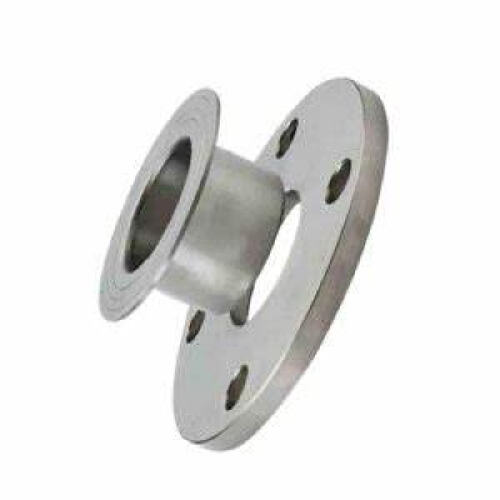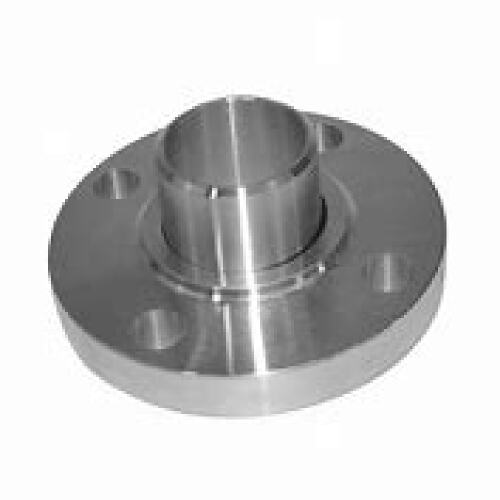A lap joint flange, also known as a loose - flange, is a crucial component in piping systems. It consists of two main parts: a stub end and a flanged ring.
Description:
A lap joint flange, also known as a loose - flange, is a crucial component in piping systems. It consists of two main parts: a stub end and a flanged ring.
The stub end is a short piece of pipe that is welded or otherwise attached to the main pipe. It has a raised face or a flat face, depending on the design requirements. The flanged ring, on the other hand, is a separate piece that fits over the stub end. This ring has bolt - holes that align with those on the mating flange, allowing for easy connection using bolts.
One of the key advantages of a lap joint flange is its flexibility. Since the flanged ring can rotate freely around the stub end, it simplifies the alignment of bolt - holes during installation. This feature is particularly useful in situations where misalignment might occur due to manufacturing tolerances or movement in the piping system.
Another benefit is its cost - effectiveness. The stub end can be made from a high - quality material suitable for the fluid being transported, while the flanged ring can be made from a less expensive material. This combination allows for a reduction in overall cost without sacrificing the integrity of the connection.
Lap joint flanges are commonly used in applications where there is a need for frequent disassembly and reassembly of the piping system. For example, in chemical plants, refineries, and offshore platforms, where maintenance and inspection of pipes are regular tasks. They are also suitable for use with non - metallic pipes, as the flanged ring can provide the necessary strength and connection point without the need for complex joining techniques for the non - metallic material.
 |
 |
 |
 |
Specifications:
| Surface Treatment | RF/FF/RJ/TG |
| Material | Carbon steel, stainless steel, alloy steel |
| Pressure | 150#-2500# |
| Product size | 1/2"-24" |
| Technics | Forged |
| Connection | Welding |
| Certificate | ISO, CE, PED, ASME, API |
| Usage | Joining Pipe Lines |
| Packing | Plywood cases\wooden Pallets |
Applications:
Lap joint flanges find extensive use in the oil and gas industry. They are crucial for connecting pipes in offshore platforms and refineries, where frequent alignment adjustments are needed during installation. In the chemical processing sector, they are applied for handling corrosive fluids, as their design allows for easy replacement of the mating flanges. Additionally, in shipbuilding, lap joint flanges are used for piping systems, enabling flexibility in assembly and disassembly, which is vital for maintenance at sea.
Advantages:
One key advantage is its high flexibility in alignment. The loose - fitting stub end allows for easy adjustment during installation, reducing the risk of stress on the connected pipes. It also offers cost - effectiveness, as only the stub end needs replacement in case of damage, not the entire flange. Moreover, it provides excellent resistance to corrosion due to the ability to choose different materials for the stub end and the mating flange. This type of flange is also relatively easy to install and maintain, enhancing overall operational efficiency.
